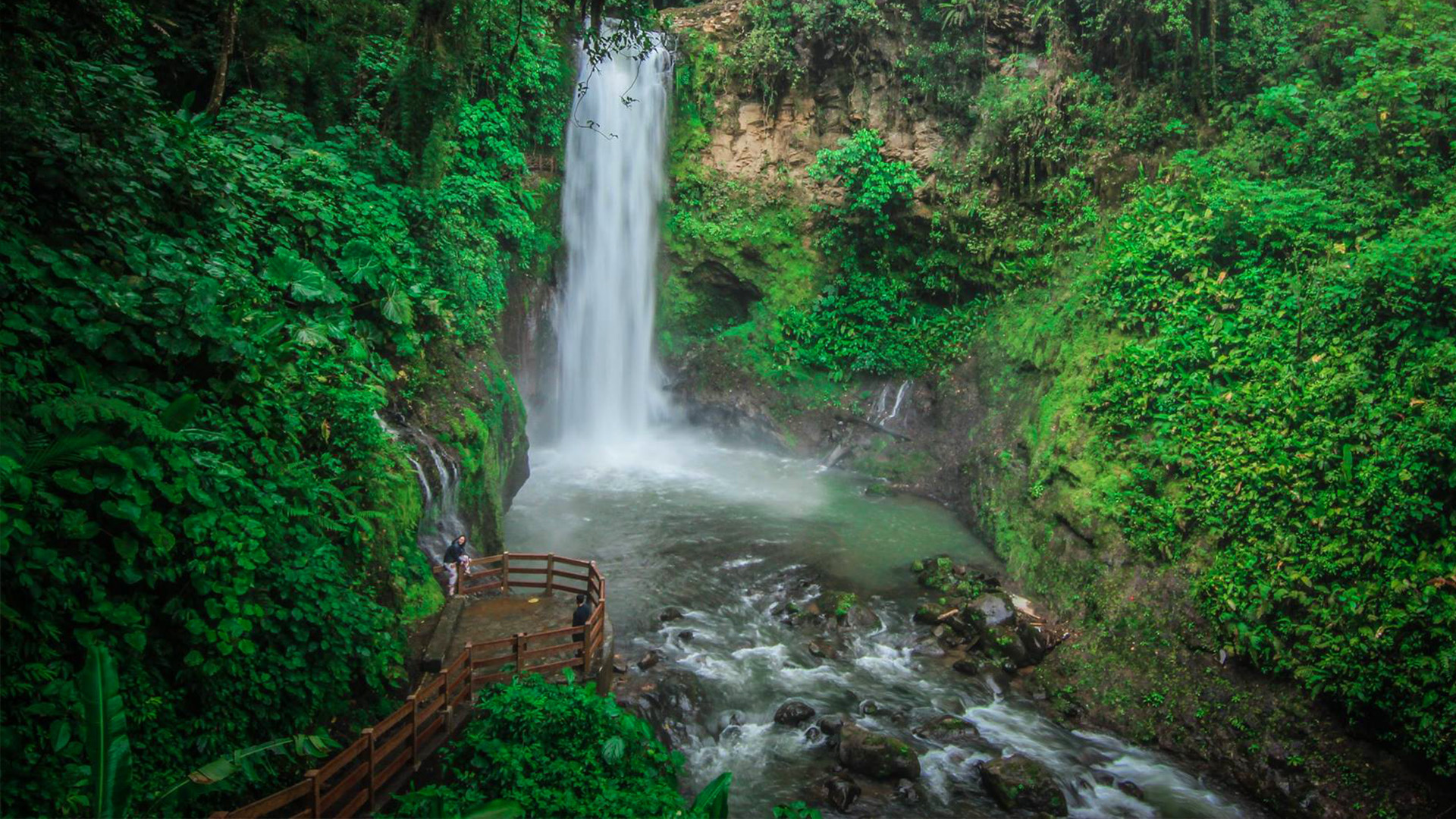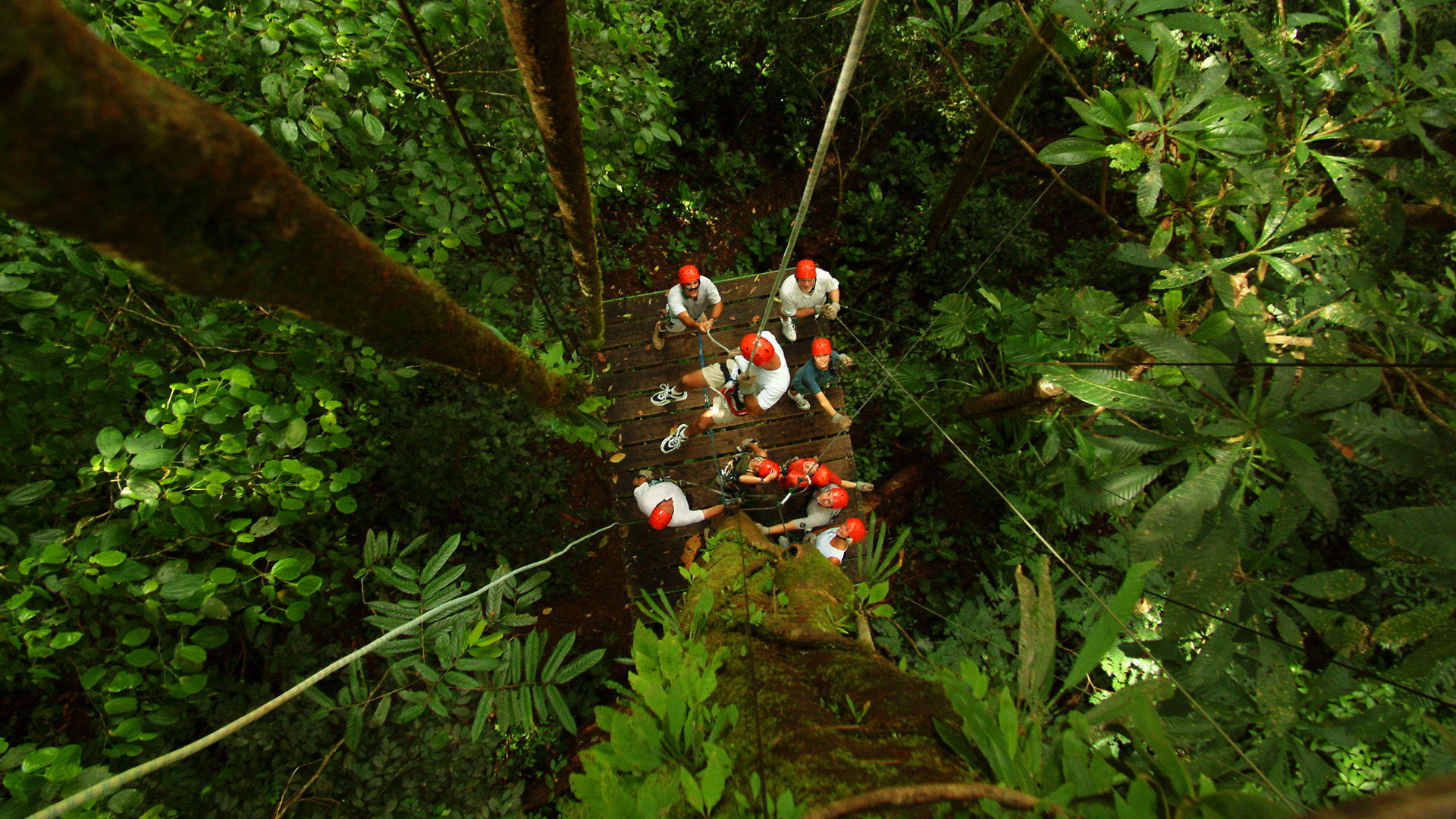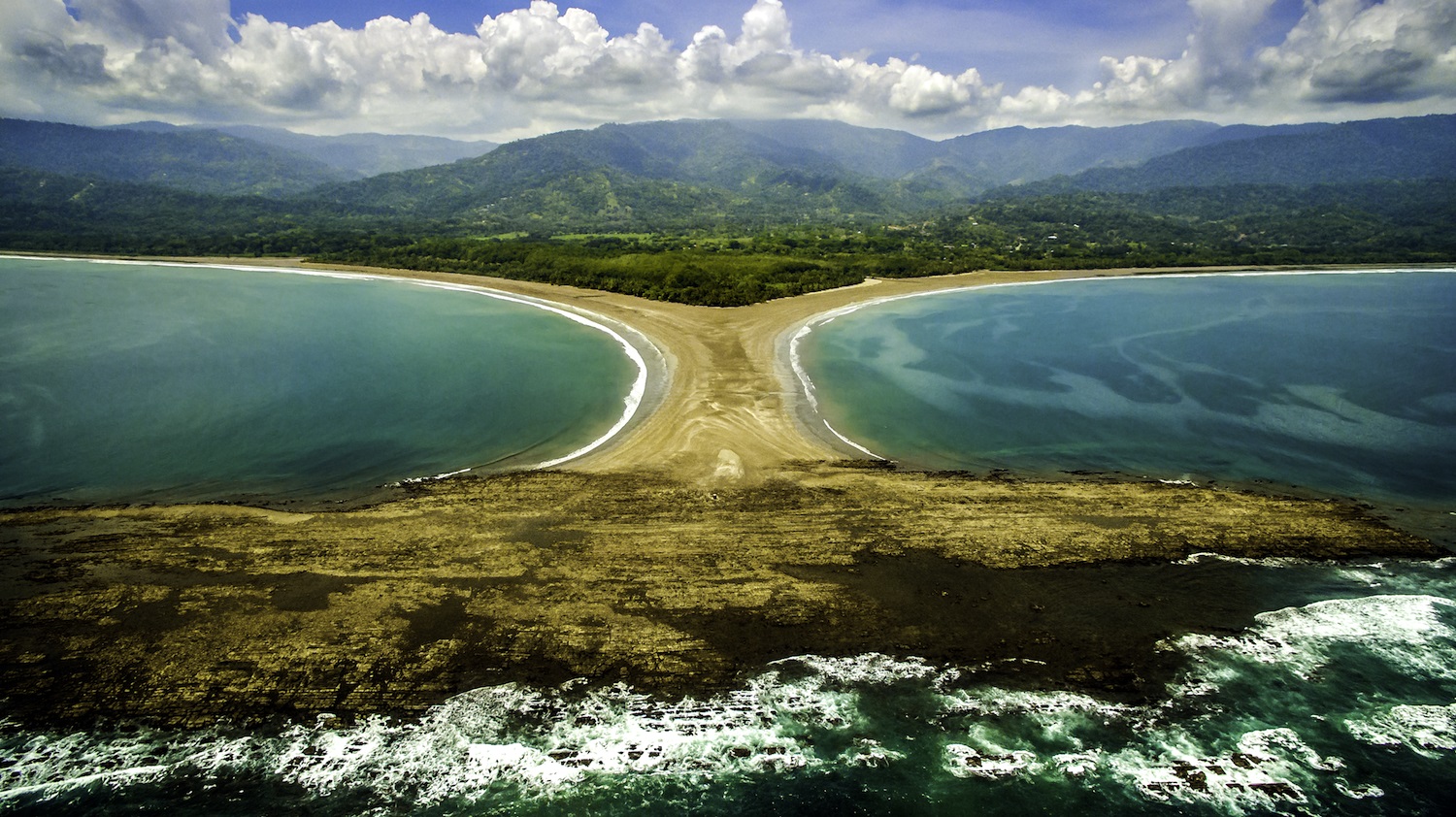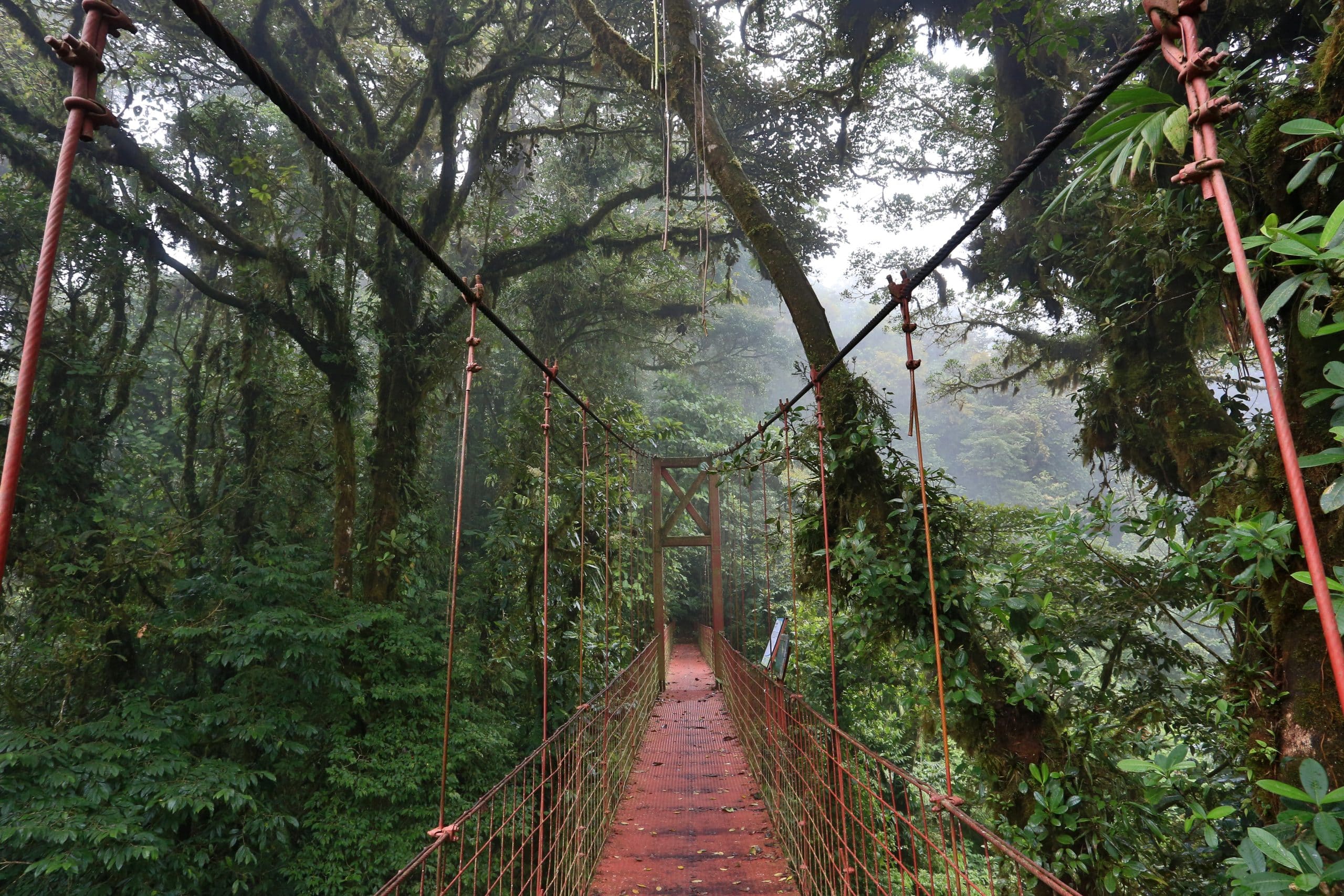
10 Best Costa Rica National Parks & Reserves
The Costa Rica National Parks & Reserves consist of lush primary virgin rainforests and a complex system of freshwater and marine resources. Costa Rica has 28 national parks, 3 of which are UNESCO World Heritage Sites. Roughly 28% of the land in Costa Rica is a park or reserve to maintain the integrity of the country’s lush landscape and thriving animal population. The Monteverde Cloud Forest is a mysterious, misty retreat in the clouds, renowned for birding and the unique micro-climates of the area. Corcovado National Park has been dubbed one of the most biologically intense places on Earth with its thick, lush rainforest and abundant wildlife. Tortuguero National Park on the North Caribbean Coast is a turtle haven that attracts nature enthusiasts from around the world.

Review our list of the most popular parks and reserves and for Costa Rica vacation inspiration!
Monteverde Cloud Forest Reserve

The Monteverde Cloud Forest is one of the most popular destinations in Costa Rica. About 2.5% of the world’s biodiversity rests in this tiny area, and about 10% of the plants found there can be seen nowhere else in the world. This is a must-visit for birdwatchers and wildlife lovers. 100% of the proceeds from entrance fees go towards education and research programs. Interested in the Continental Divide? In the Monteverde Cloud Forest, you can have one foot on the Caribbean side, and the other on the Pacific!
Tortuguero National Park

Tortuguero National Park is a truly unique destination as it’s accessible only by airplane or boat. That doesn’t keep it from being the third most popular in the country, however! Tortuguero National Park has a massive variety of flora and fauna, thanks to the eleven different habitats that rest within its boundaries. A boat or kayak trip down the Tortuguero canals is a great chance to watch out for animals and birds! Tortuguero is popular among turtle enthusiasts for the variety of sea turtles that return to the beaches each year for nesting.
Corcovado National Park, Osa Peninsula

Named “the most biologically intense place on earth” by National Geographic, Corcovado National Park is the largest park in Costa Rica. It covers nearly half of the beautiful and untouched Osa Peninsula. Its popularity with scientists and ecologists alike is no surprise – it contains one of the last remaining areas of lowland tropical rainforest in the world. It is also home to elusive creatures such as the Baird’s Tapir, Harpy Eagle, and the endangered Jaguar. Day tours with a professional naturalist guide are recommended and can be arranged from nearly all of the ecolodges in Drake Bay and Puerto Jimenez. There are 4 main ranger stations or entrances to the park: Sirena, La Leona, San Pedrillo, and Los Patos. They are accessible by dirt road, boat, or charter flight (Sirena Ranger Station only). You can also fly into Carate, a 1.75-mile hike from La Leona Ranger Station. There are no roads within the park, so you’ll have to hike!
Related Article: A Guide to Visiting Corcovado National Park
Piedras Blancas National Park
Piedras Blancas National Park is located in the southern zone of Costa Rica, just off the Osa Peninsula. The forest is covered in verdant Jurassic forest and is home to many species of endemic plants and animals. Piedras Blancas is an important wildlife corridor because it connects to Corcovado National Park, and is one of the few places in Costa Rica where jaguars still thrive. Stay at Playa Nicuesa Lodge if you want to experience Piedras Blancas National Park. The lodge backs right up to the park!
Arenal Volcano National Park

Arenal Volcano within Arenal Volcano National Park is one of the most recognized attractions in the country. Covering 290 square miles, the conservation area covers eight of the 12 life zones in Costa Rica and is a popular destination for all kinds of travelers. There are numerous lodges and hotels in the area, catering to everything from adventure travel to natural hot spring delights. Birdwatchers should stop by – of the 850 species that have been identified in Costa Rica, most can be found here.
Manuel Antonio National Park
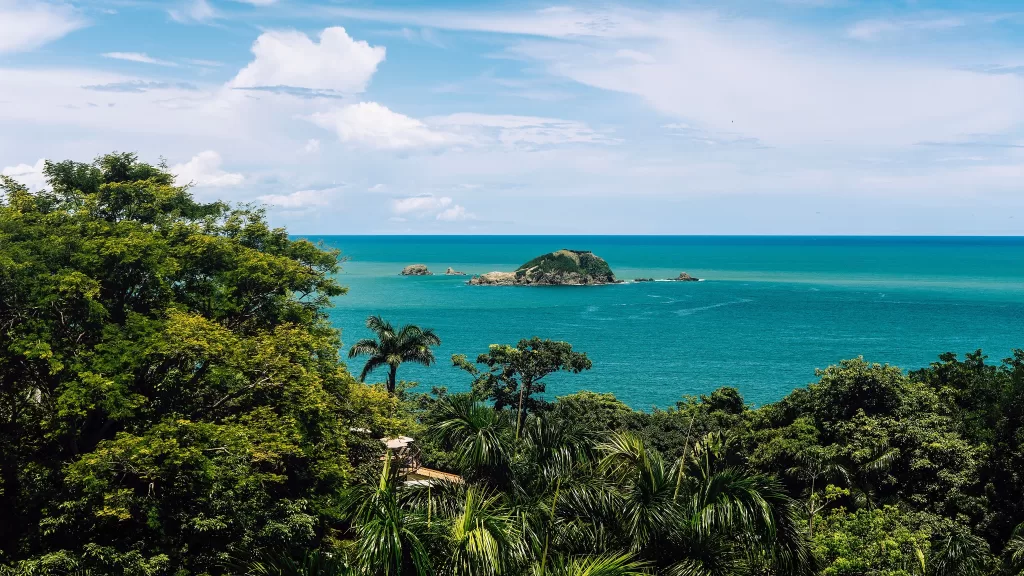
The jewel of Costa Rica, Manuel Antonio National Park is the smallest park in the country, yet it has some of the most impressive landscapes. Forbes magazine named it among the most beautiful parks in the country in 2011. The variety is part of the charm. Think white sand beaches nestled into coves, the lush tropical forest along the edges, and huge mountains rising from the midst of the trees. The fascinating and beautiful coral reefs are a snorkeler’s dream!
Ballena Marine National Park, South Pacific Coast
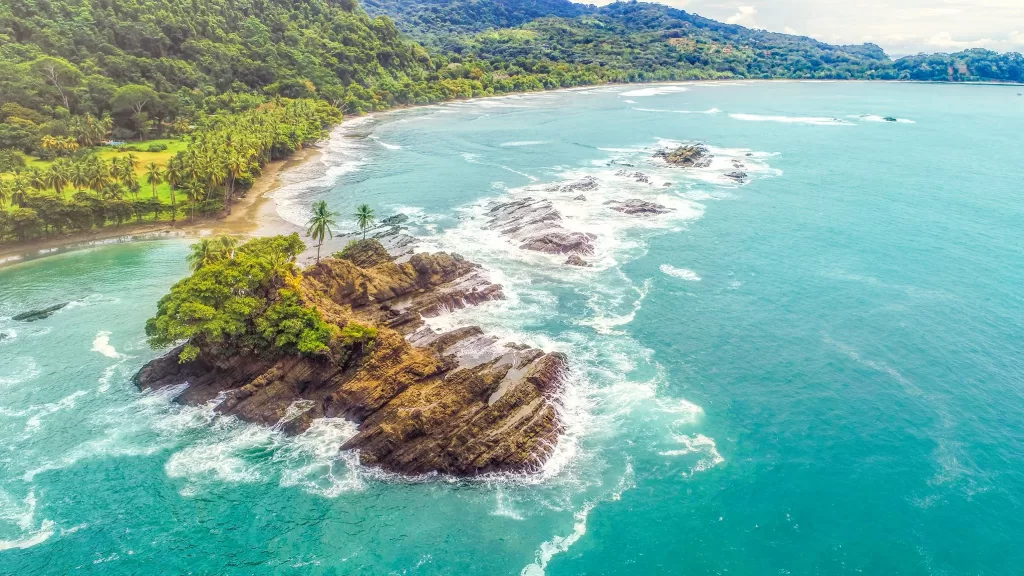
Situated on the South Pacific Coast of Costa Rica, Ballena Marine National Park is a primarily oceanic park, with 110 hectares of land and 5375 hectares of sea. It’s named after the humpback whales that migrate from July to October, and then again from December through March. In a country with 11 times more marine territory than land, Costa Rica’s Ballena Marine National Park is dedicated to conserving the rich marine ecosystem of the area.
Palo Verde National Park, Guanacaste
Palo Verde National Park is an often-overlooked wonder of wetlands amid the tropical dry forests of the Guanacaste province. The park is flooded by the Tempisque River to create a marshy home for an abundance of wetland bird species such as Roseate Spoonbills, Egrets, Wood Storks, and Herons. In the green season (from June through November), the park marshes swell and attract wildlife, increasing your odds of sightings. Book a float tour with a professional naturalist guiding you through this vast network of channels and mangroves, searching for wildlife.
Rincon de la Vieja National Park, Guanacaste
Rincon de la Vieja is the tallest and most active volcano in Costa Rica’s north-west region of Guanacaste at 6,286 feet above sea level. Its name, which translates to “Corner of the Old Woman,” comes from a legend of a native princess whose lover is thrown into the crater by her angry father. She spends the remainder of her life wandering the volcanic slope with the power to heal. People seeking medicinal cures come to “the corner of the old woman” to heal themselves from illnesses. Rincon de la Vieja Volcano last erupted in 2011, but the geothermal activity beneath the surface still remains active as vents, geysers, fumaroles, hot springs, and mudbaths dot the land. Guided hikes can be arranged through the park to explore the landscape, explore the wildlife, and discover waterfalls.
Related Article: Rincon de la Vieja National Park Guide
Tenorio Volcano National Park & Rio Celeste

Located in the Guanacaste region, Tenorio Volcano National Park is probably best known for the Rio Celeste Waterfall within the park, a light blue waterfall naturally colored by minerals in two converging rivers. The legend says that after God finished painting the sky, he dipped his paintbrush in the river, which is why the river is now called Rio Celeste. The most popular excursion within the park is hiking to the Rio Celeste Waterfall, which can be arranged as a tour led by a naturalist guide. The hike to the waterfall takes about three hours with possible wildlife sightings like monkeys, toucans, reptiles, and amphibians. The Tenorio Volcano remains dormant, but geological activity continues in the area, with geysers shooting water into the air and hot springs bubbling up from underground.
Costa Rica National Park FAQs:
How many national parks are there in Costa Rica?
There are 28 national parks in Costa Rica.
What is the largest reserve in Costa Rica?
Costa Rica is the largest (and most biologically intense) reserve in Costa Rica.
What percentage of Costa Rica is national parks?
Costa Rica has preserved roughly 28% of its land for national parks and reserves.
















